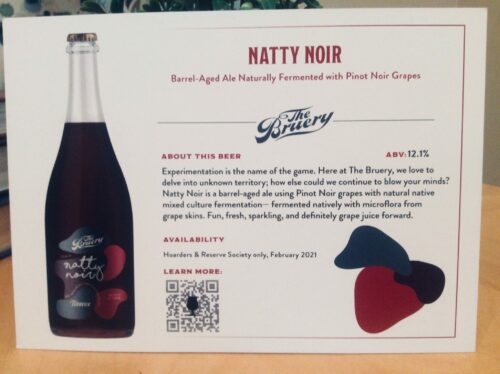
Looks like that Cismontane is starting a science project and we will be the beneficiaries!
It is a Single Malt Series, let the brewers talk about it, “Years ago I conceived a project that would captivate the scientific and artistic mind of the brewer: single malt beers. I’m very happy to say that we are finally doing it.
Think of it this way, if we completely understand the behaviors of various malts we have more control of any subsequent beers that we generate. This gives us artistic ability through scientific testing.
We have partnered with Best Malz out of Germany to do a series of single malt beers with all of their base and specialty malts. The specialty malt beers will differ in that they will be blended with a base malt. The base malt will be selected based on least amount of color and flavor.
The purpose of the study is to understand the effects of various malts in the brewery, and the resulting beers. We will control all of the variables of the brewing process except the type of grain used. We believe that each grain will affect the following variables that we can measure in our brewery: extraction rate, change in pH, attenuation, and color. This will also affect many variables that only you can measure with your nose and tongue.”
Materials
· Water (R.S.M.’s finest) enough to get that kettle to 16 bbl of beer!!!!!!!
· Yeast (Cali ale baby) ~5gal pitch 1million cells / ml / °P
· 715 lbs base malt grains (our variable)
o Best Malz – Pilsner
o Best Malz – Vienna
o Best Malz – Munich
o Best Malz – Heidlburg
o Best Malz – Red X
· Hops (Northern Brewer – single addition at 60min for 16 IBU)
· Brewer (the Citizen)
· Brewery and all its stuff (Cismontane Brewing Company)
Method
We will brew a beer where all the ingredient’s processes will be exactly the same with every batch. The one variable that will change is the type of malt. Below is a list of the controls:
· Mash temp: 152
· Quantity of grain: 715lbs
· Run off from mash to kettle: 465gal
· Hop Addition: 35oz Northern brewer with 10.9% alpha acid at 60 min
· Boil time: 120 min
· Yeast: California ale yeast pitching rate 1million cells / ml / °P
· Fermentation temp: 66 °F
· Water: We will add water to the kettle to have 16bbl of beer before we transfer to the fermenter.
I am a big proponent of tests and experiments like these. They really open the eyes to what a single ingredient change can do to a beer. Mikkeller has done it with hops, yeast, barrels. White Labs does different yeast strains in their brewery and now Cismontane.


